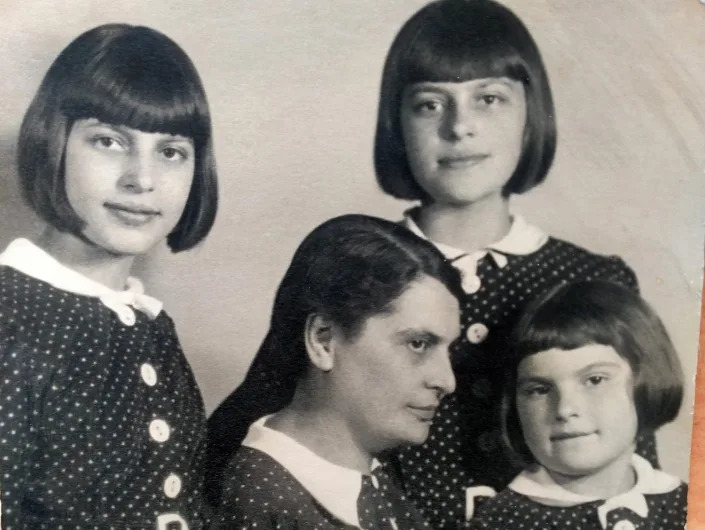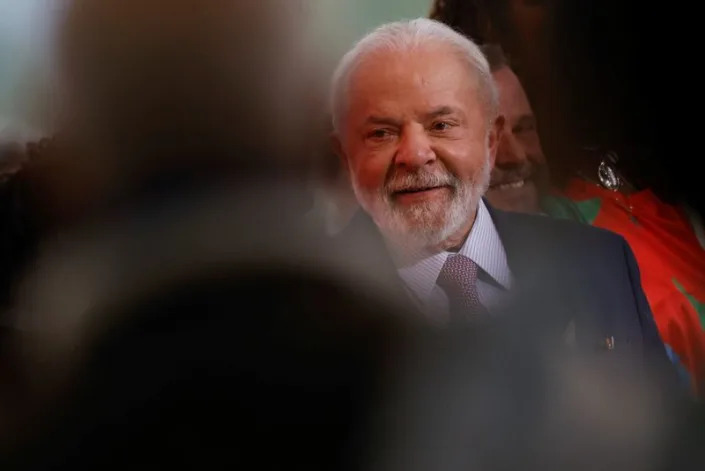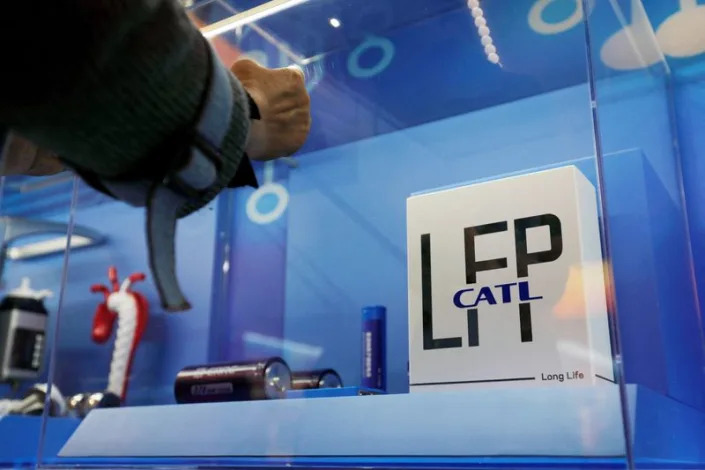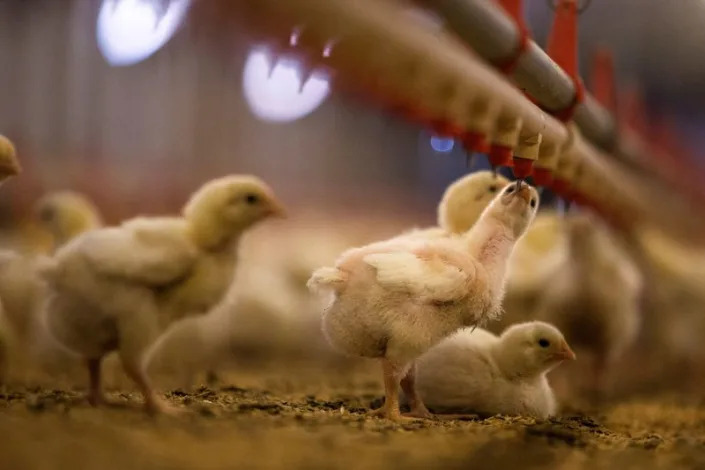
Nancy Segal
Jane Ridley
Fri, March 24, 2023

Twin concentration-camp survivors Stepa Heller, left, and Annetta Able, with their birthday cake in 2019. The inmate number that Heller was given at Auschwitz can be seen tattooed on her arm.Courtesy of Daphna Able
Nazis wanted identical twin Annetta Able to get pregnant by another identical twin at Auschwitz.
Dr. Josef Mengele, known as the "Angel of Death," treated her and her sister as human guinea pigs.
Able's horrific story features in a new book about twins who survived these Holocaust "experiments."
Soon after Annetta Able and her identical twin sister, Stephanie Heller, were liberated from Auschwitz, they learned that Dr. Josef Mengele planned to have each of them made pregnant by identical twin brothers.
They knew the men who'd been selected for the process because Mengele, the Nazi physician who carried out such "medical experiments" on prisoners, had already subjected the four young adults to various blood transfusions.
"You don't want to think about things from the past like that," Able, now 99, told Insider, referring to Mengele's warped intentions.
Documents retrieved from the camp and witness statements by other Jewish inmates who were forced to work for Mengele confirmed the proposed "experiment" on the two sets of siblings.
"We only found out afterwards," Able said in an email to Insider that she dictated to her daughter, Daphna Able. She added, "We never saw the other twins again after that, but know that one of them died after the experimentation."
Mengele was known as the 'Angel of Death' because of his power and human experiments at Auschwitz
Able and her sister's story is featured in the new book, "The Twin Children of The Holocaust: Stolen Childhood and the Will to Survive." The book — written by the psychology professor Nancy Segal, the director of the Twin Studies Center at California State University, Fullerton — documents Mengele "experiments" using identical and fraternal twins as human guinea pigs.
"It was documented that that around 1,500 pairs passed through Auschwitz. But another reference said it was 730," Segal said, adding that the exact number "will never be known."
"Mengele was known as the 'Angel of Death' because of these unthinkable and horrific experiments to which he subjected the twins and some of their families," Segal told Insider.

Identical twin sisters Annetta and Stephanie in their mid-20s, after their liberation from the Nazi death camp.Courtesy of Daphna Able.
Daphna Able said that her mother and aunt, known to family and friends as Stepa, who died in 2019, were appalled to learn that Mengele plotted to have them impregnated and killed at some point during their pregnancies in order to dissect the fetuses to find out if they were also identical twins.
"He wanted to determine if they would multiply," Daphna told Insider. But the young women had stopped menstruating because they were given so little food to eat. "They wouldn't have been able to conceive anyway," she said.
The identical twins were treated as guinea pigs
The sisters were taken by the Nazis from their home in Prague, now in the Czech Republic, in 1942. They were 19 when they were transferred to Auschwitz a year later. They didn't know it at the time, but the rest of the family, including their mother and 12-year-old sister, had been sent to the gas chambers.
"When we arrived in the cattle cars, the Nazi soldiers knew to be on the lookout for twins," Able said in her email. She said they were taken to barracks where other twins were held.
The women were escorted to Mengele's laboratory at the camp where, Able said, he asked "so many questions" and recorded their height, weight, and the color of their eyes and hair. "We were not of any interest to him other than as human guinea pigs," Able said in the email.

Annetta Able with her daughter Daphna, who often helps her mother tell her story about her two-year ordeal in Auschwitz.Courtesy of Daphna Able.
She went on to describe the conditions at the camp as "vile, freezing, cramped, and exposed to the elements." She added, "We were always starving. It's what you would imagine hell to be."
Talking directly to Insider, Able said that she and her sister were determined to "stay alive together." She said, "We have always been close. I lived her life, and she did mine."
Segal said that many of the subjects of Mengele's experiments knew that if one died, the other would be killed because he would "compare their organs." "The bond between the twins in Auschwitz was so important," Segal said. "Everyone had to be as mindful of their twin as themselves."
The twins were subjected to blood transfusions from identical twin men around their age
Able told Insider that their two-year ordeal at the camp in occupied Poland was "a hard time" — made even more painful because they didn't know where their other family members were, until they discovered they had been killed.
In the email, Able said the siblings tried to cope with the torment by "making up stories to avoid our reality." "We spoke about how wonderful it will be when we get home to our family," Able added. "What we would eat, how we would play with our sister."
Daphna Able said that her mom and her twin had told her they were terrified when Mengele would order the blood transfusions between them and the identical brothers. The 67-year-old said that the sisters got sick from the experiments and Heller had constant issues with her health after leaving the camp.

Identical twins Annetta and Stephanie Heilbrunn, with their mother and younger sister in Prague, before they were displaced by the Nazis. The girls' mother and sister perished in the gas chambers.Courtesy of Daphna Able.
Segal told Insider that she disagreed with experts who claimed that Mengele wanted to understand the biological basis of twins so that he could increase the Aryan race. "It didn't make sense because he would have studied the parents, not the twins themselves," Segal said. "The general consensus is that he was trying to demonstrate a genetic influence on racial differences and, in that way, prove that the Aryans were superior to the other races."
Able described her and her sister as 'two bodies and one soul'
Able said in her email that she and Heller turned 21 during the death march when the SS tried to transfer its prisoners by foot ahead of the imminent liberation of Auschwitz. They went on to qualify as nurses in former Czechoslovakia before moving to Israel, then Australia.
"My sister and I were always two bodies and one soul," the great-grandmother of six said in the email to Insider. "The shared experience made us even closer if that was possible."
Do you have a powerful story to share with Insider? Please send details to jridley@insider.com.
Read the original article on Insider








